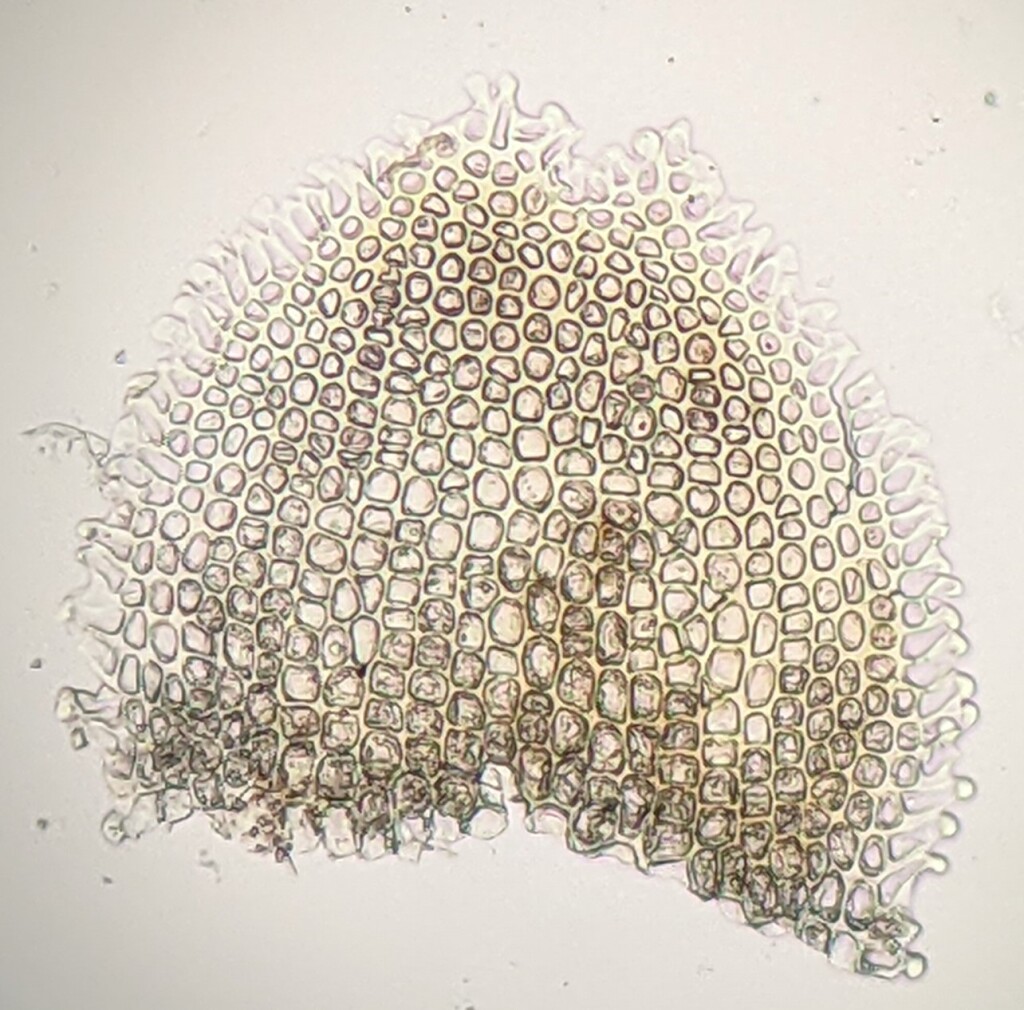Nothogymnomitrion
Terrestrial or lithophytic, autoicous. Specialised asexual propagules absent. Stems frequently but irregularly branched, with two ranks of lateral leaves, differentiated into creeping stems with rudimentary leaves and stems with normal leaves; branches emerging laterally from stems and with a collar of tissue at base. Lateral leaves ovate to triangular in outline, emarginate or shallowly bifid, transverse, densely imbricate, suberect, adaxially concave, reddish-brown. Leaf cells unistratose, in marginal 1–2 rows differing drastically in form from other cells forming a border; leaf cells away from margin rounded-oblong to rounded-quadrate, circular or elliptic, often longer toward central base, papillose, thick-walled, collenchymatous but not forming distinct trigones, with 1–4 colourless, spherical, ellipsoid or ovoid and finely granular-botryoidal oil bodies; marginal cells longer and thicker-walled than cells not in margin, ovate, with free ends projecting around margin, hyaline and without oil-bodies. Rhizoids few and scattered abaxially on normal leafy axes, abundant on all surfaces of creeping stems with rudimentary leaves, hyaline. Androecia on main stem or branches, with bracts larger and more patent than normal leaves, each with two antheridia. Sporophytes terminal on branches or on main stem, developing in a perianth; perianth ovoid, laterally compressed, shallowly bilabiate, with irregularly crenulate to denticulate mouth; capsule globose or nearly so, bistratose; elaters 3-spiral; spores globose, punctate, brown.
A single species, N. erosum (Carrington & Pearson) R.M.Schust., widespread and occurring on Tristan da Cunha, South Georgia, Chile, New Zealand and alpine New South Wales, Victoria and Tasmania.
The marginal border of thicker-walled and more elongate cells with free projecting ends is diagnostic of this genus (Schuster 1996).
Schuster, R.M. (1996). Studies on antipodal hepaticae. XII. Gymnomitriaceae. Journal of the Hattori Botanical Laboratory 80: 1–147.
 Spinning
Spinning